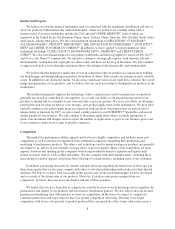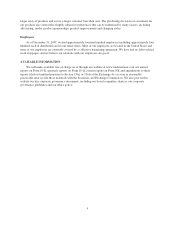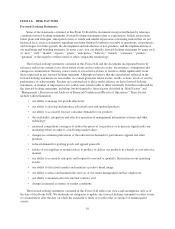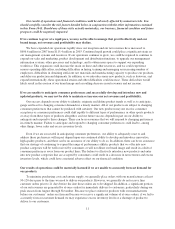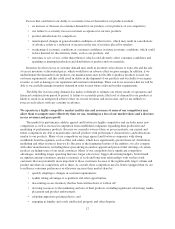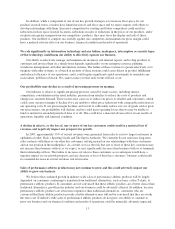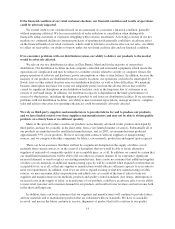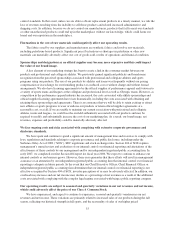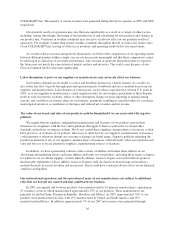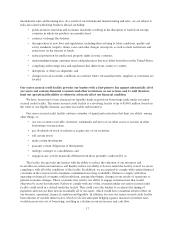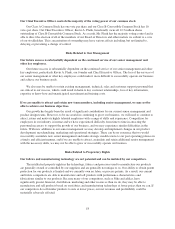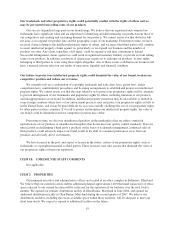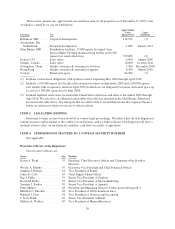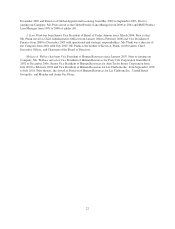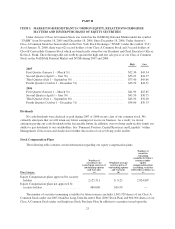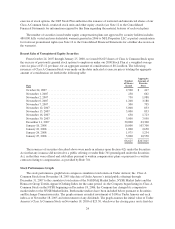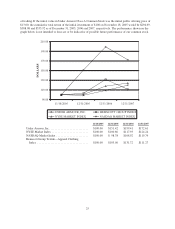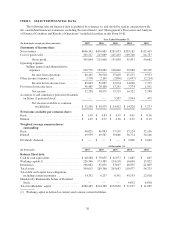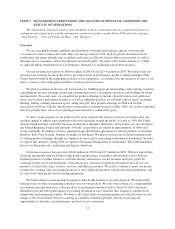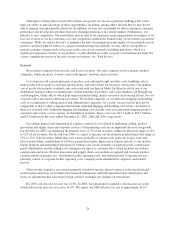Under Armour 2007 Annual Report Download - page 28
Download and view the complete annual report
Please find page 28 of the 2007 Under Armour annual report below. You can navigate through the pages in the report by either clicking on the pages listed below, or by using the keyword search tool below to find specific information within the annual report.Our Chief Executive Officer controls the majority of the voting power of our common stock.
Our Class A Common Stock has one vote per share and our Class B Convertible Common Stock has 10
votes per share. Our Chief Executive Officer, Kevin A. Plank, beneficially owns all 12.5 million shares
outstanding of Class B Convertible Common Stock. As a result, Mr. Plank has the majority voting control and is
able to direct the election of all of the members of our Board of Directors and other matters we submit to a vote
of our stockholders. This concentration of ownership may have various effects including, but not limited to,
delaying or preventing a change of control.
Risks Related to Our Management
Our future success is substantially dependent on the continued service of our senior management and
other key employees.
Our future success is substantially dependent on the continued service of our senior management and other
key employees, particularly Kevin A. Plank, our founder and Chief Executive Officer. The loss of the services of
our senior management or other key employees could make it more difficult to successfully operate our business
and achieve our business goals.
We also may be unable to retain existing management, technical, sales and customer support personnel that
are critical to our success, which could result in harm to key customer relationships, loss of key information,
expertise or know-how and unanticipated recruitment and training costs.
If we are unable to attract and retain new team members, including senior management, we may not be
able to achieve our business objectives.
Our growth has largely been the result of significant contributions by our current senior management and
product design teams. However, to be successful in continuing to grow our business, we will need to continue to
attract, retain and motivate highly talented employees with a range of skills and experience. Competition for
employees in our industry is intense and we have experienced difficulty from time to time in attracting the
personnel necessary to support the growth of our business, and we may experience similar difficulties in the
future. With new additions to our senior management we may develop and implement changes in our product
development, merchandising, marketing and operational strategies. There can be no assurance that we would
successfully assimilate new senior management and make strategic modifications to our past operating policies in
a timely and efficient manner, and if we are unable to attract, assimilate and retain additional senior management
with the necessary skills, we may not be able to grow or successfully operate our business.
Risks Related to Proprietary Rights
Our fabrics and manufacturing technology are not patented and can be imitated by our competitors.
The intellectual property rights in the technology, fabrics and processes used to manufacture our products
are generally owned or controlled by our suppliers and are generally not unique to us. Our ability to obtain patent
protection for our products is limited and we currently own no fabric or process patents. As a result, our current
and future competitors are able to manufacture and sell products with performance characteristics and
fabrications similar to our products. Because many of our competitors, such as Nike and adidas, have
significantly greater financial, distribution, marketing and other resources than we do, they may be able to
manufacture and sell products based on our fabrics and manufacturing technology at lower prices than we can. If
our competitors do sell similar products to ours at lower prices, our net revenues and profitability could be
materially adversely affected.
18


